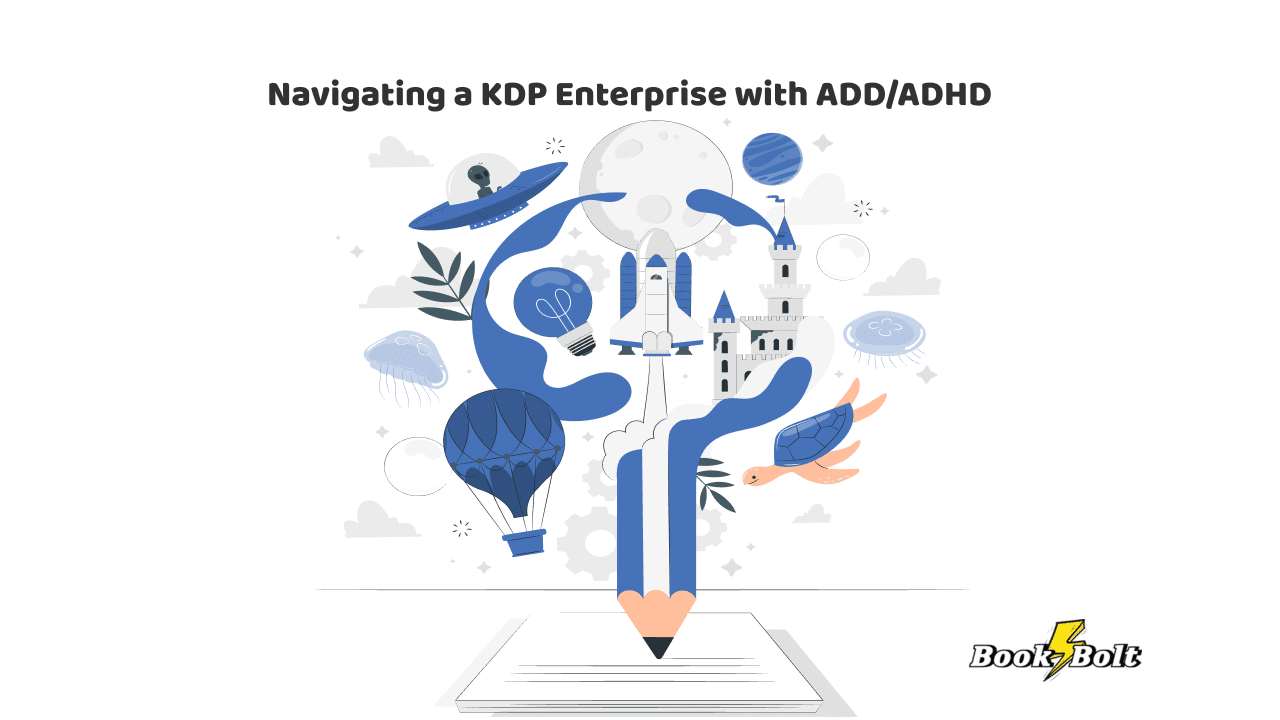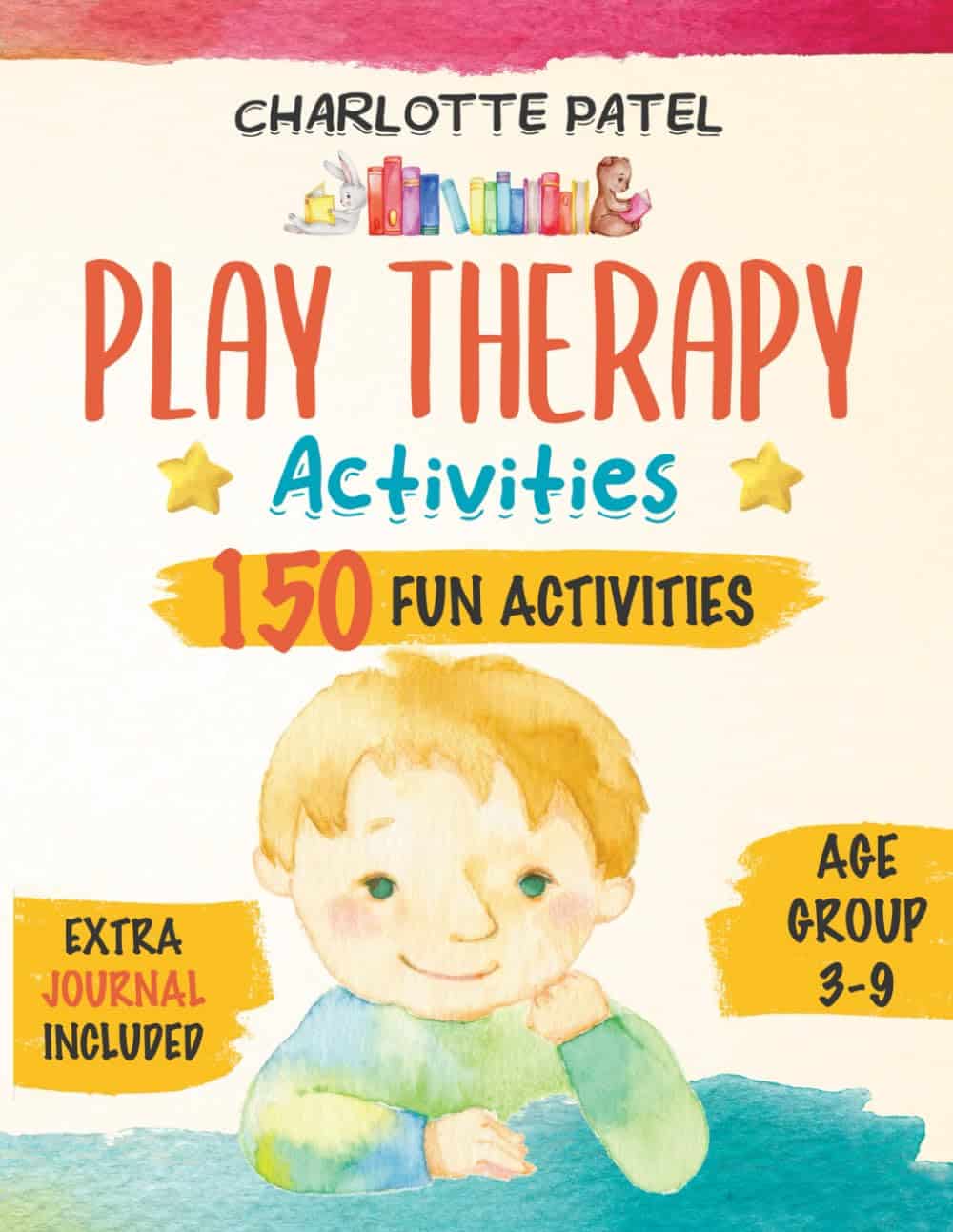
I saw a headline recently that said, “What’s Going On With The Spike In ADHD Diagnoses?”
Simple. I see it as a heightened awareness of the individual complexities of everyone’s brain wiring that have been with us since we crawled from the primordial ooze. Right now, the focus is on those with the more noticeable characteristics such as hyper-focus, crippling anxiety, intense interests, organizational pendulum-swinging, high levels of creativity, etc.
Basically, me.
And most likely you.
With the deliciously volatile cocktail of ambition, creativity and organizational skills, folks like us are drawn to Amazon’s Kindle Direct Publishing program. Free of the intimidating, judgmental and somewhat elite (in the classic use of the word) gatekeepers of traditional publishing, we can sell our visions directly to the people who will appreciate our work.
What’s missing? The structure, direction and guidance of those same gatekeepers. Without them, we are left to manage ourselves. And anyone with ADHD – like myself, officially diagnosed last year after decades of obvious traits – knows that we can be as much our own obstacle as we can be our most reliable resource.
If you’re already nodding your head, then you’re one of us and you want to know how to manage your KDP projects amidst such challenges.
We don’t have an answer. But we do have shared experience, some coping skills an some strategies. At the very least, it’s important to have a conversation about it.

Unleashing Creativity
Creativity is a hallmark of the ADD/ADHD mind. It’s an expanse of vibrant ideas and sudden inspirations, perfect for the KDP marketplace where innovation can set you apart. Picture this: one day, the idea of a meditation journal with guided prompts strikes; the next, you’re imagining a sophisticated planner for entrepreneurs. Your mind is a fertile ground for these flashes of inspiration.
However, turning these flashes into tangible products is where the challenge lies. The creation of no- to low-content books might not require traditional narrative skills, but it demands a keen eye for design, an understanding of user needs, and the ability to create a coherent product out of a spark of inspiration. Each project involves several phases—conceptualization, design, layout, and marketing. Managing these phases efficiently can be daunting when your attention fluctuates.

Establishing a Workflow
For individuals with ADD/ADHD, establishing a structured yet flexible workflow is essential. It’s about creating a system that accommodates fluctuating energy levels and varied interests. A typical day might involve using digital design tools to create templates, which could be exhilarating or overwhelming depending on your state of mind.
To manage this, consider implementing a system of timers and breaks. For instance, spend 30 minutes brainstorming new book ideas, then switch to 30 minutes of actual design work. This method helps keep the brain engaged by offering variety while ensuring progress across different projects.

The Challenge of Routine
Routine is often recommended as a cure-all for productivity woes, especially for those with ADD/ADHD. Yet, establishing and sticking to a routine can be one of the hardest challenges. While a structured day can help direct your energies wisely, the rigidness of a fixed schedule can sometimes feel like a trap, triggering our inner rebel — eager to break the chains even if they’re of our own making. The key is flexibility—having a routine that allows room for those days when the mind just doesn’t want to focus.
Dividing the publishing process into smaller, manageable tasks can be incredibly effective. Instead of viewing a project as a monolithic task of ‘create a planner,’ break it down: one day, you might work on the cover design, another on page layouts, and another on writing promotional descriptions.

Balancing Creativity with Productivity
Hyper-focus, a common occurrence in those with ADD/ADHD, can be a double-edged sword. It allows intense concentration on tasks you find engaging, which can lead to exceptional work, particularly in creative endeavors like designing unique page layouts or covers. However, it can also mean neglecting other important aspects of the business, like marketing your existing inventory or responding to customer inquiries.
Finding balance often requires external tools or assistance. Project management software, alarms, and even outsourcing certain tasks like social media management or customer service can help you maintain focus on creative tasks without losing sight of the business side.

Navigating Work/Life Balance
The blending of personal and professional life is a significant risk for home-based businesses, especially when your workspace is just a desk away from your living space. For someone with ADD/ADHD, setting physical and temporal boundaries is crucial. Designating specific hours for work and adhering to them can help mitigate the risk of work bleeding into personal time and vice versa. Moreover, it’s important to schedule downtime—periods where your brain can wander without guilt. This not only prevents burnout but also nurtures your creative faculties.
And yes, it’s also easier said than done.
Transitioning from Side Hustle to Full-Time
Whether KDP publishing is a side hustle or your full-time career will also impact how you manage your projects. As a side hustle, there’s less financial pressure, allowing more freedom to experiment and learn from failures without significant repercussions. However, transitioning to full-time can bring new pressures, as your livelihood now depends on the productivity and success of your books.
For those making this transition, it’s vital to scale your operations thoughtfully. Automating certain processes, like sales tracking and customer follow-ups, and possibly hiring help, can ease this transition. It’s also important to continuously educate yourself about market trends and adapt your products and strategies accordingly.
Final Words
If you’re navigating KDP with ADD/ADHD, remember you’re not alone. Many successful publishers thrive in this space by leveraging their unique ability to think outside the box, their boundless creativity, and their passion for creating something new. It’s about finding strategies that work for you—structuring your workflow to accommodate your energy fluctuations, using tools to manage productivity, and setting boundaries to maintain a healthy work/life balance.
By embracing your strengths and acknowledging your challenges, you can create a fulfilling and successful career in KDP publishing. Remember, every journal, planner, or activity book you create is not just a product; it’s a testament to your creativity and perseverance. So, keep pushing forward, keep innovating, and most importantly, keep publishing.




